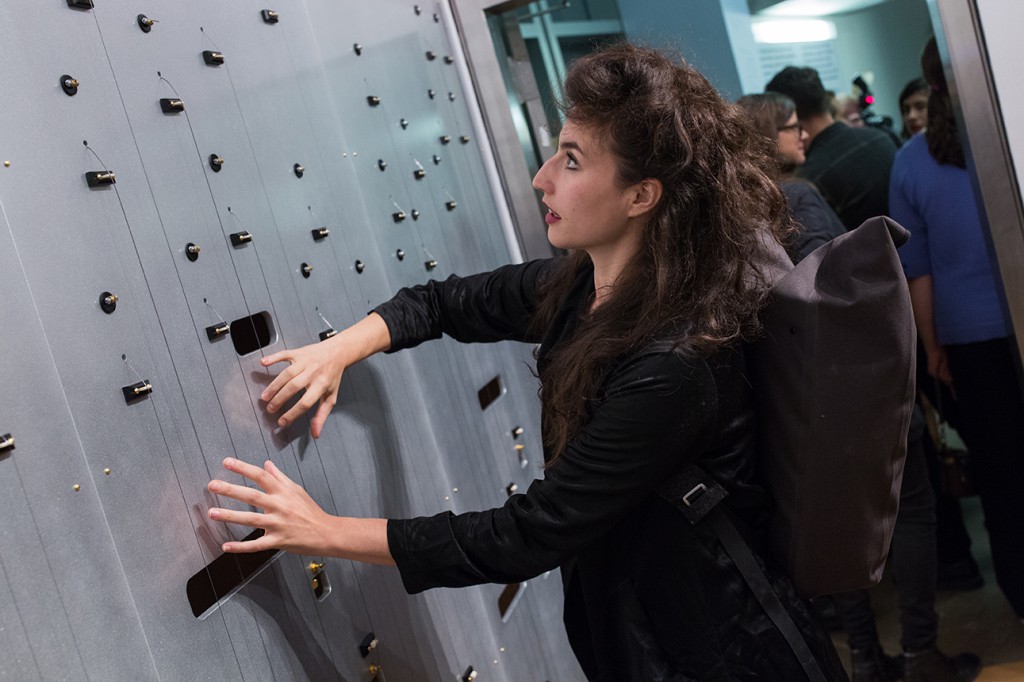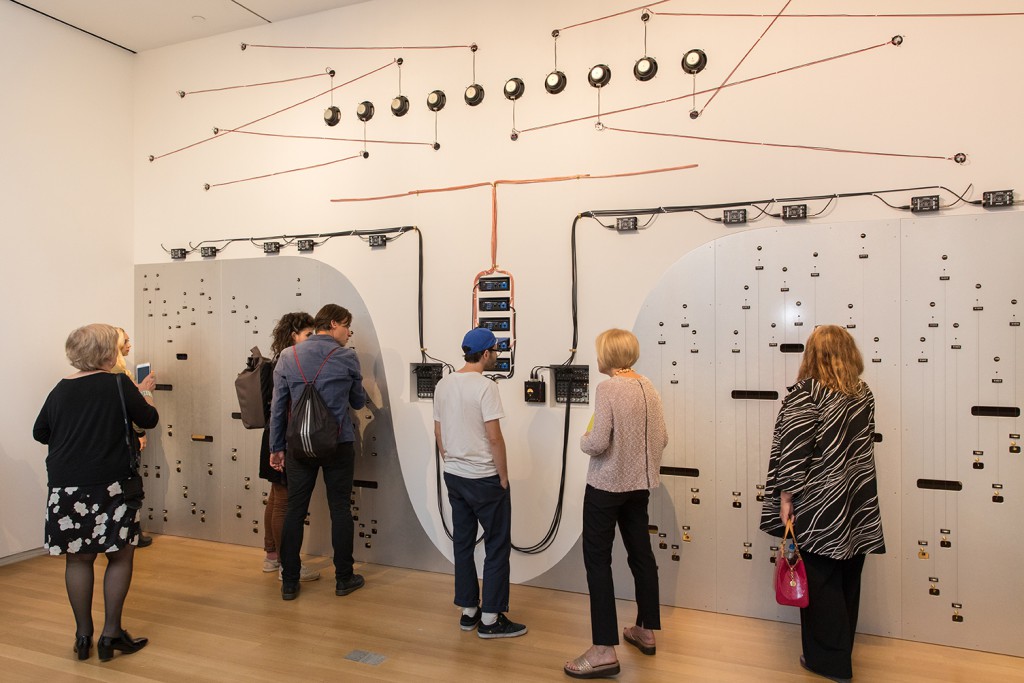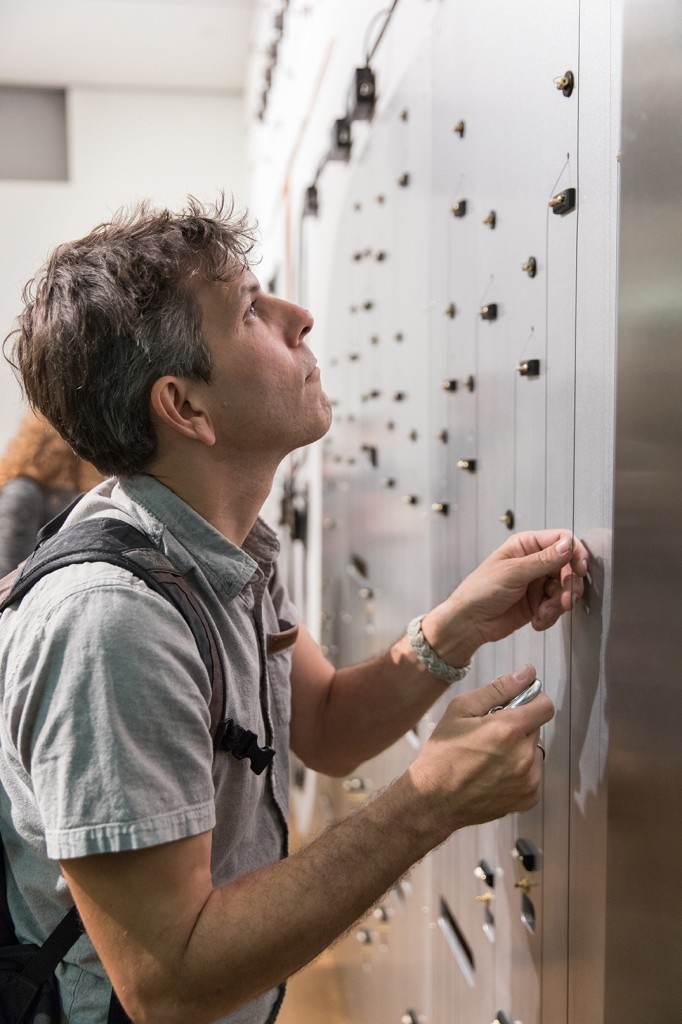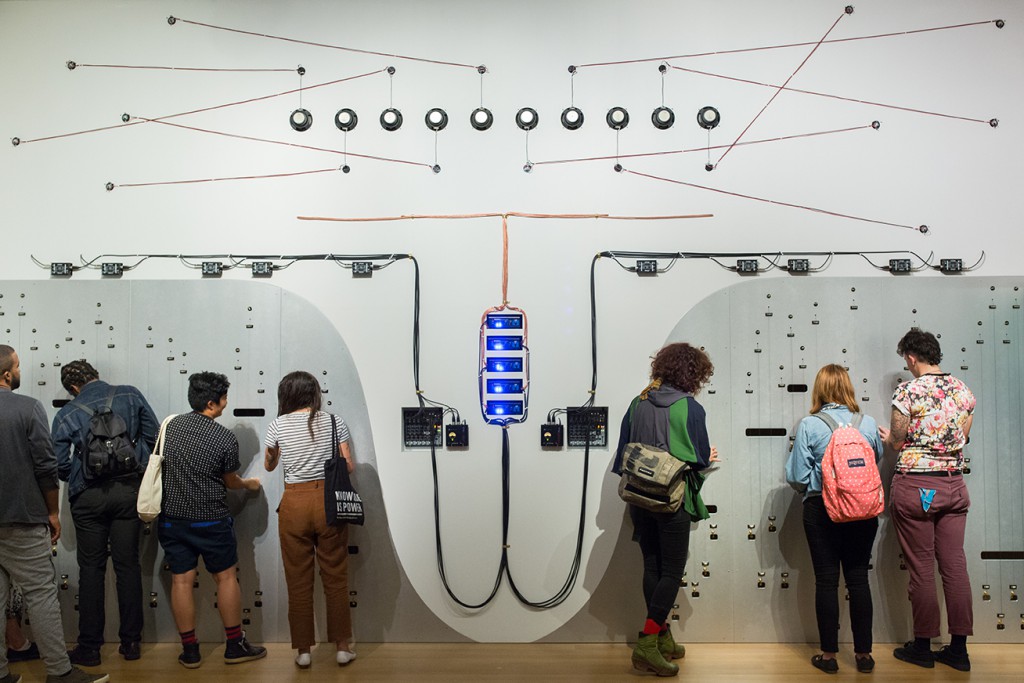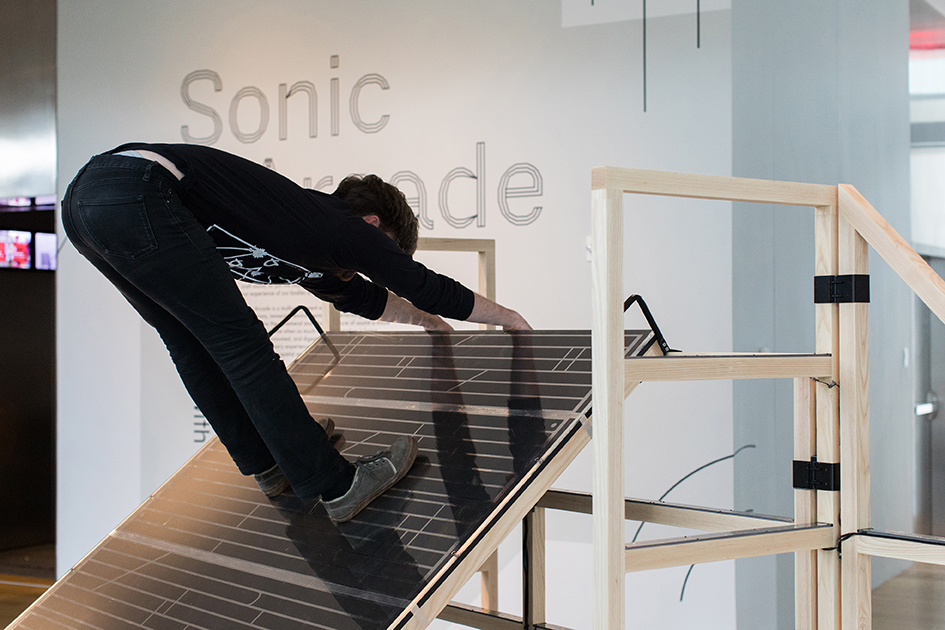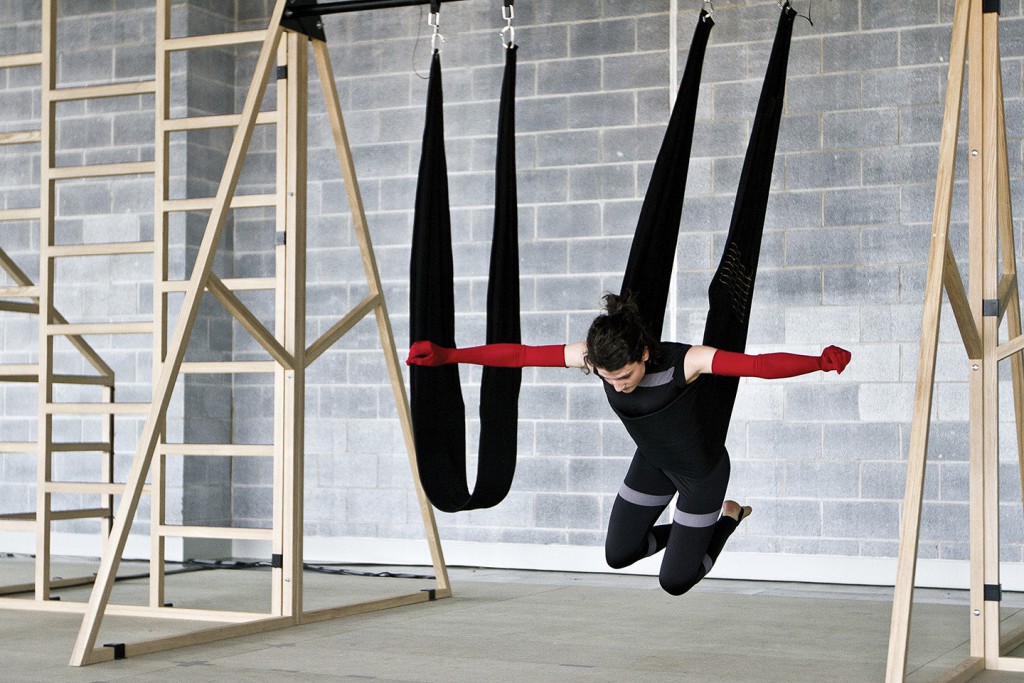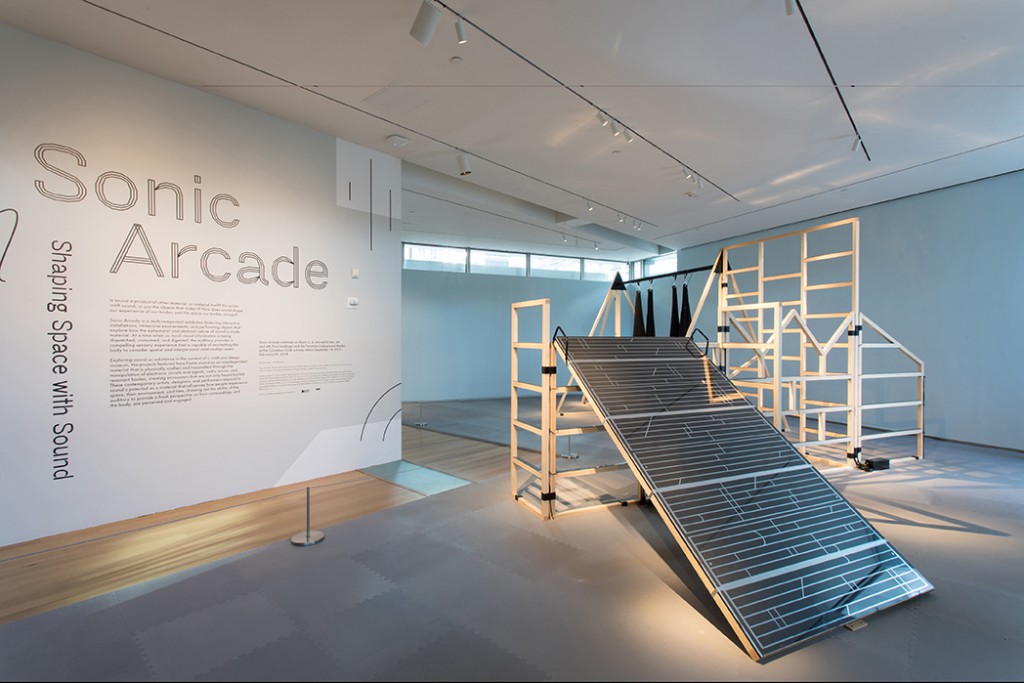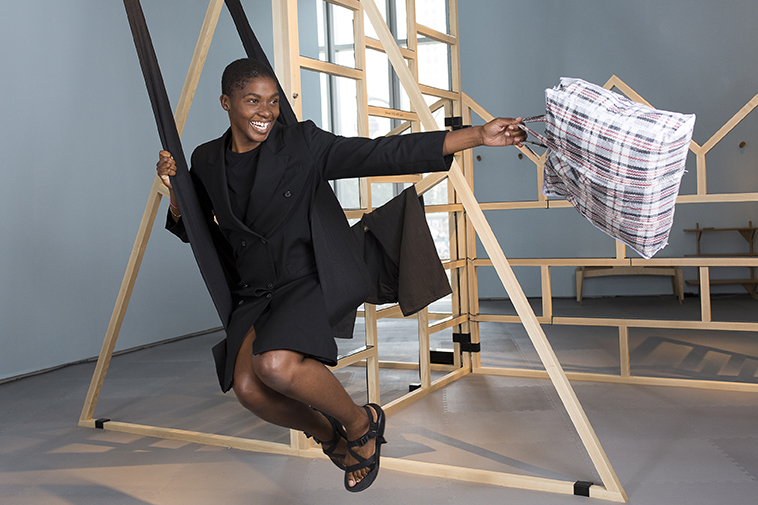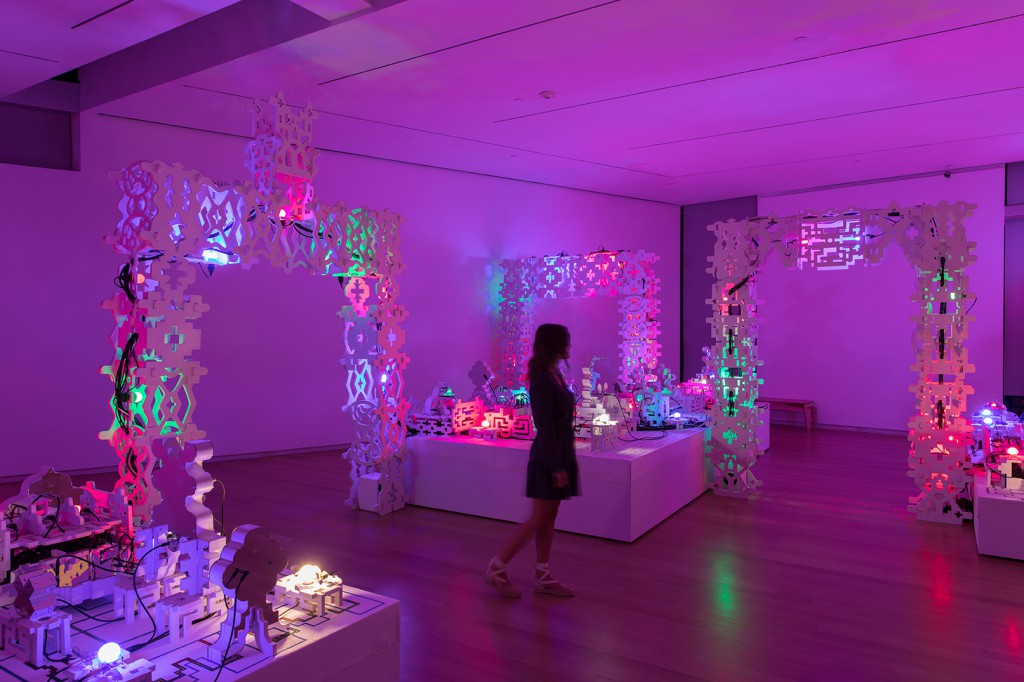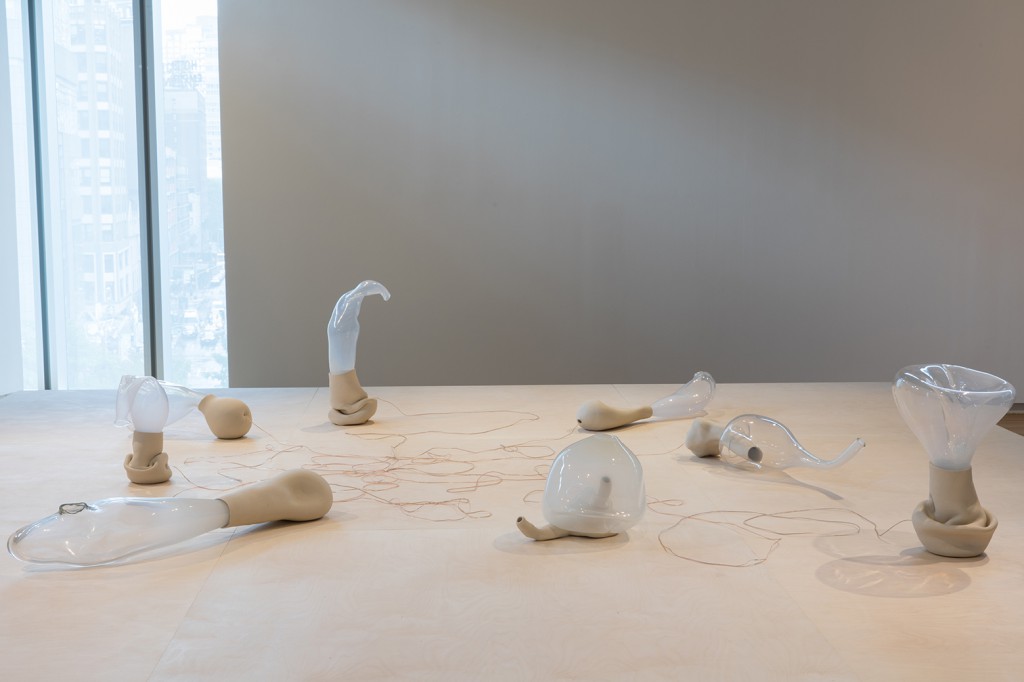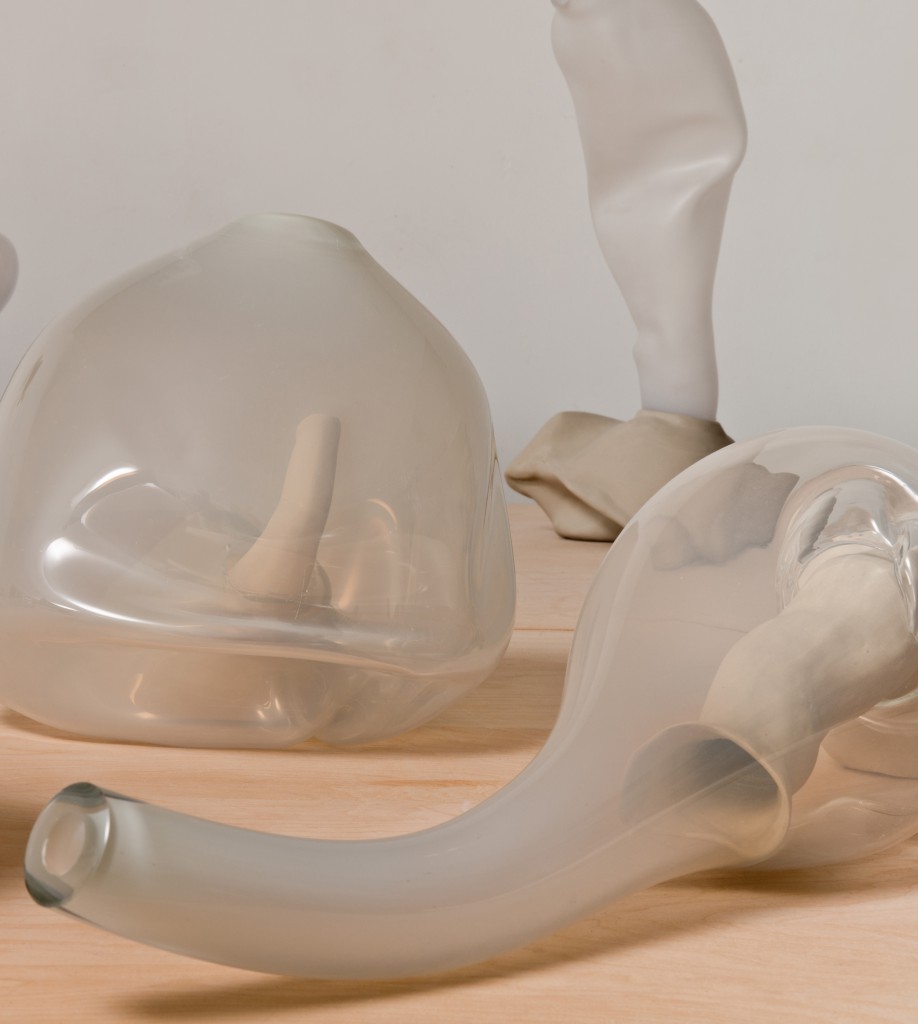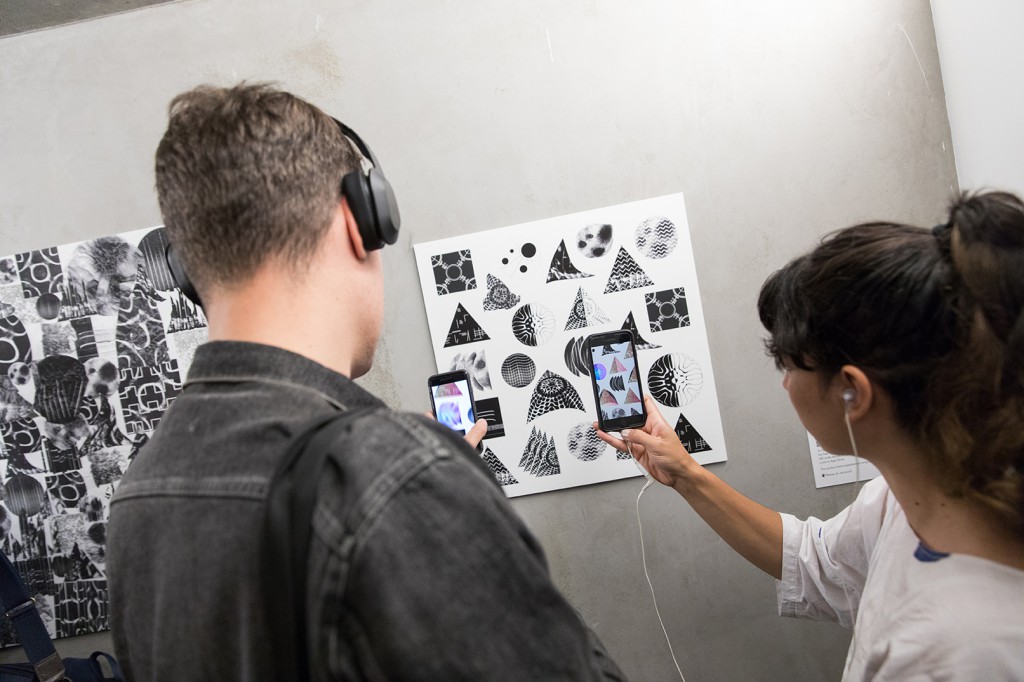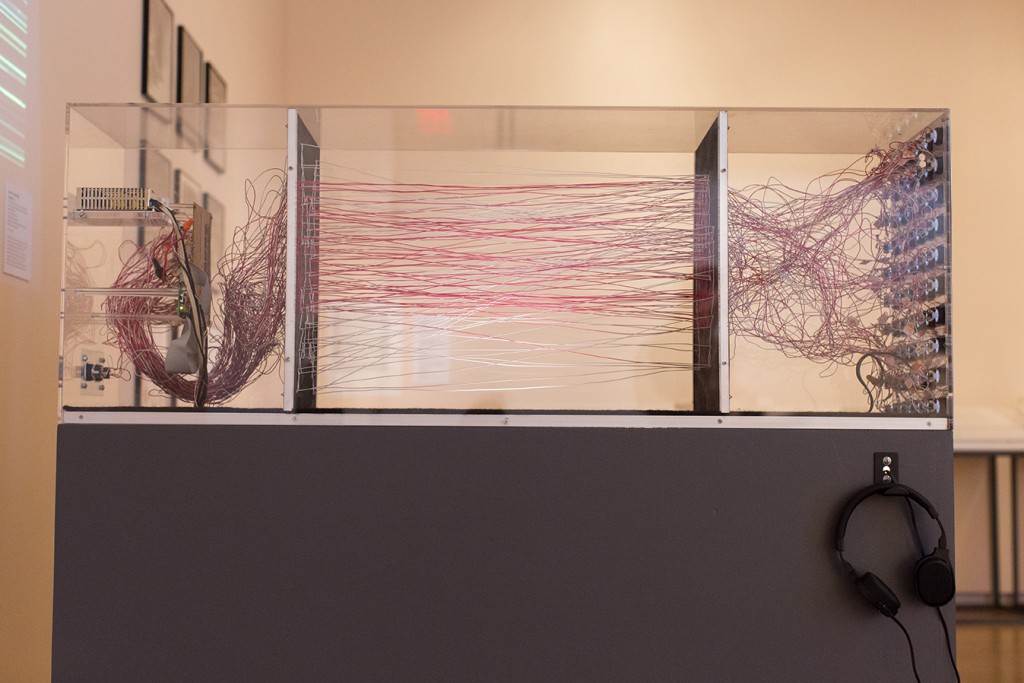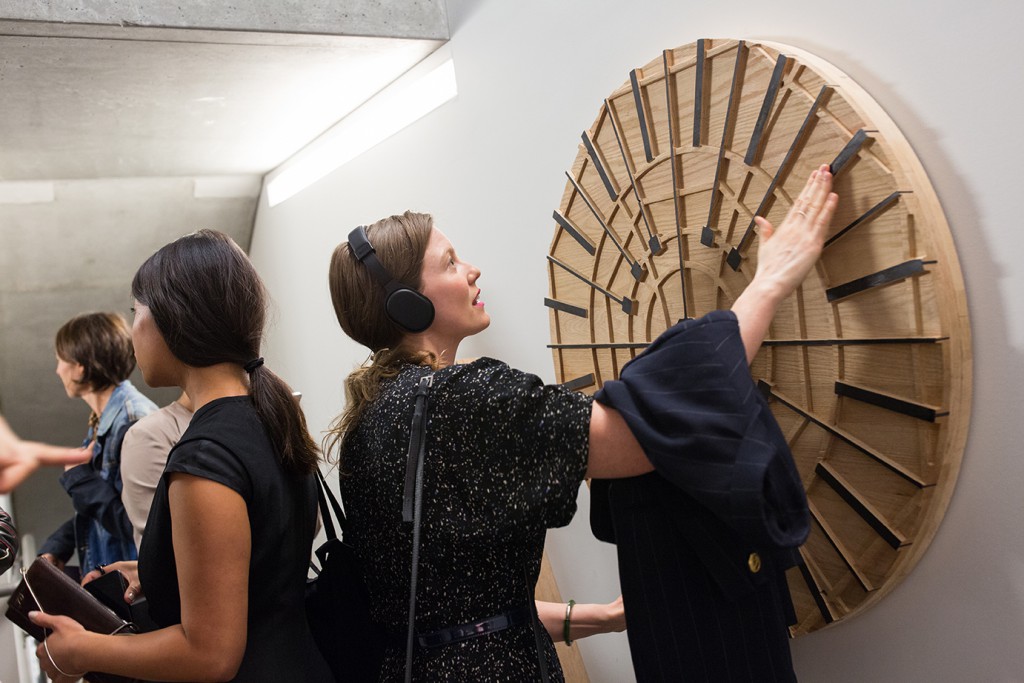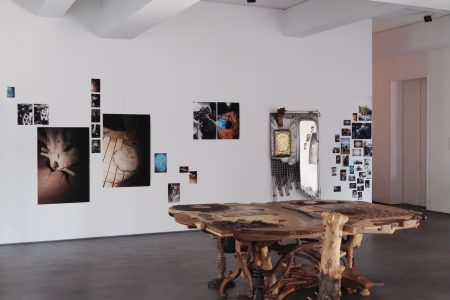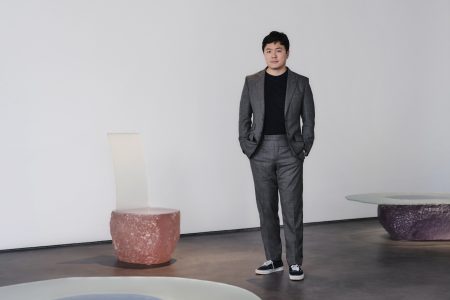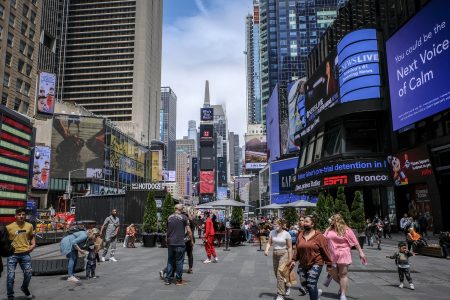Sonic Arcade at MAD
This autumn and winter, New York’s MAD Museum dedicates the majority of its galleries to an immersive series of interactive installations that reveal the wide history and application of sound art.
It’s often hard to materialise the invisible sense of sound but through a long history of interventionary endeavours, artists and designers have attempted to visualise this resonate yet ethereal element. Beyond the use of advanced recording technologies, many have employed the supporting ingredients of light, texture, photography, space, physical materials and actual instruments to express message or meaning. Mounted throughout New York’s Museum of Arts and Design, Sonic Arcade (on view till 25 February, 2018) is an interactive procession of sound-based installations and interactive exhibits that reveal the scope of this abounding medium.
Featuring work by over twenty talents, the multimodal showcase emphasises immersion. Visitors are asked to reconsider the perception of their surroundings and museum etiquette. Aptly, Sonic Arcade breaks with such conventions and asks guests to touch, play, and listen. In some cases, as in evident with the Polyphonic Playground by Studio PSK or Knotted Gate Presence Weave by MSHR, a visitor’s very presence establishes audible response. Whereas the former requires one to engage in the haptic performance of sitting, pushing, climbing and stroking various surfaces of a play structure with embedded sensors, the latter simply requires them to walk through an cybernetic environment to create new orchestrations of sound, light, and colour.
Qualities of craft, design, and materiality are not overlooked. Julianne Swartz’s Sine Body installation combines ceramic and blown glass to create iterative vessels that generate different oscillation sound waves. Various works transmute the apparatus of musical instruments that can be literally played through either digital feedback or physical tone. Propagation (Opus 3) by Naama Tasabar is a wall mechanism that emulates most string-based percussion instruments. Employing the museum wall as a literal sounding board, the installation transforms the institution’s architecture into a resonate body itself. Other showcases look to the role of documentation and the highly influential role of radios in changing music culture since the early to mid Twentieth Century. Subject to Gesture by Robert Aiki Aubrey Lowe even allows guests to tempt their hands at DJ-ing while exploring the haptic connection of one’s dexterity and the synthetic sound produced through analog synthesizers.
Sonic Arcade: till 25 February 2018
MAD Museum: 2 Columbus Circle, New York
